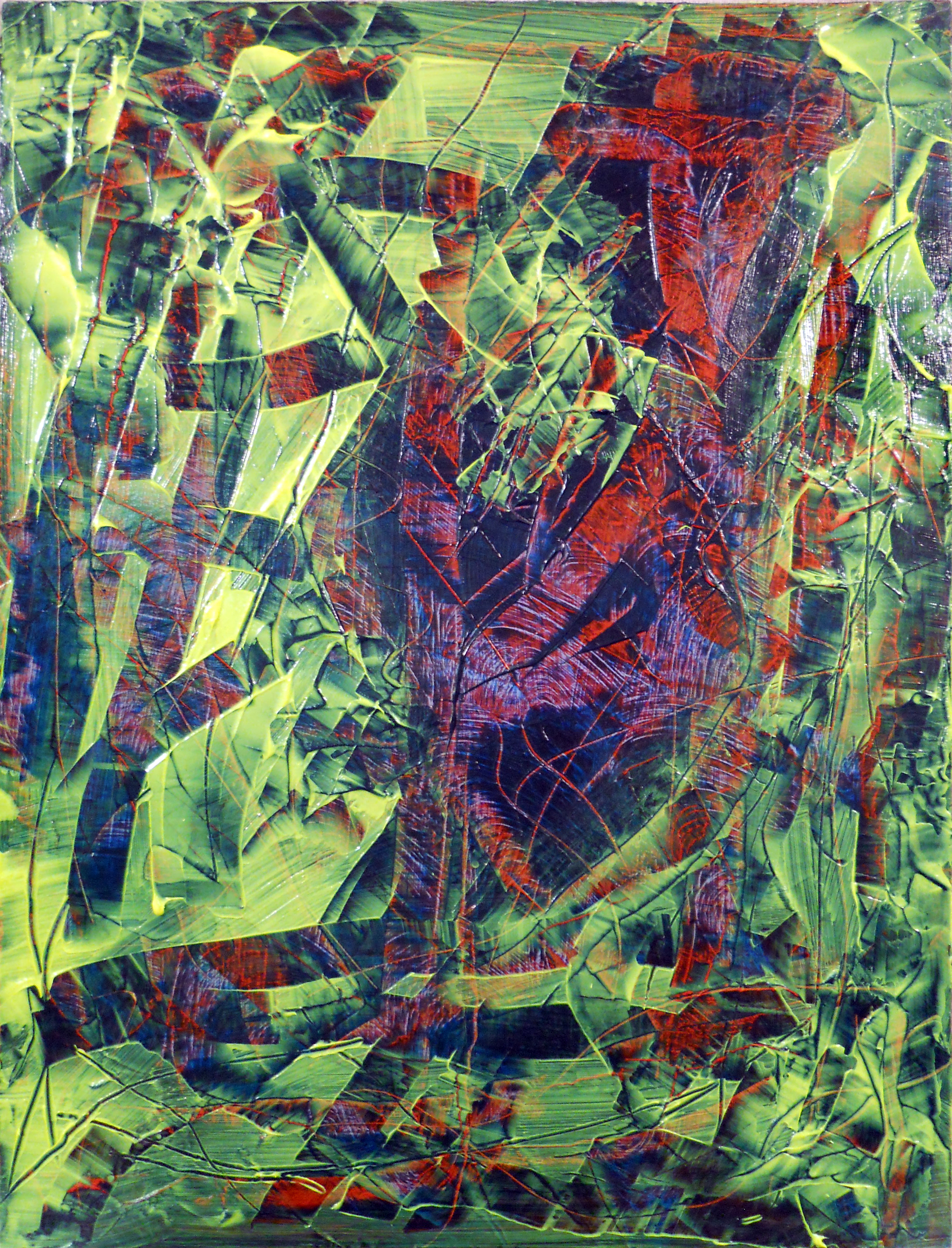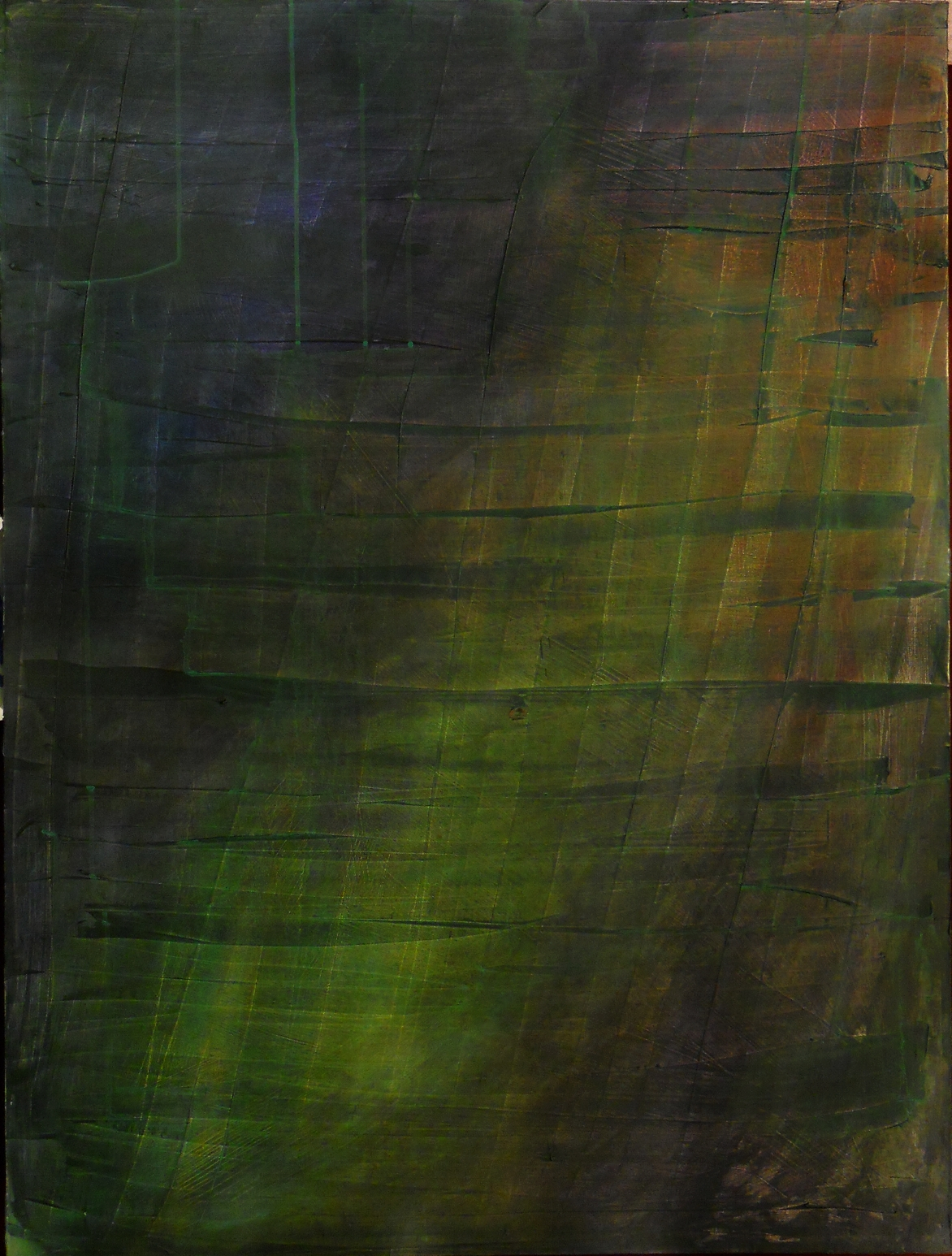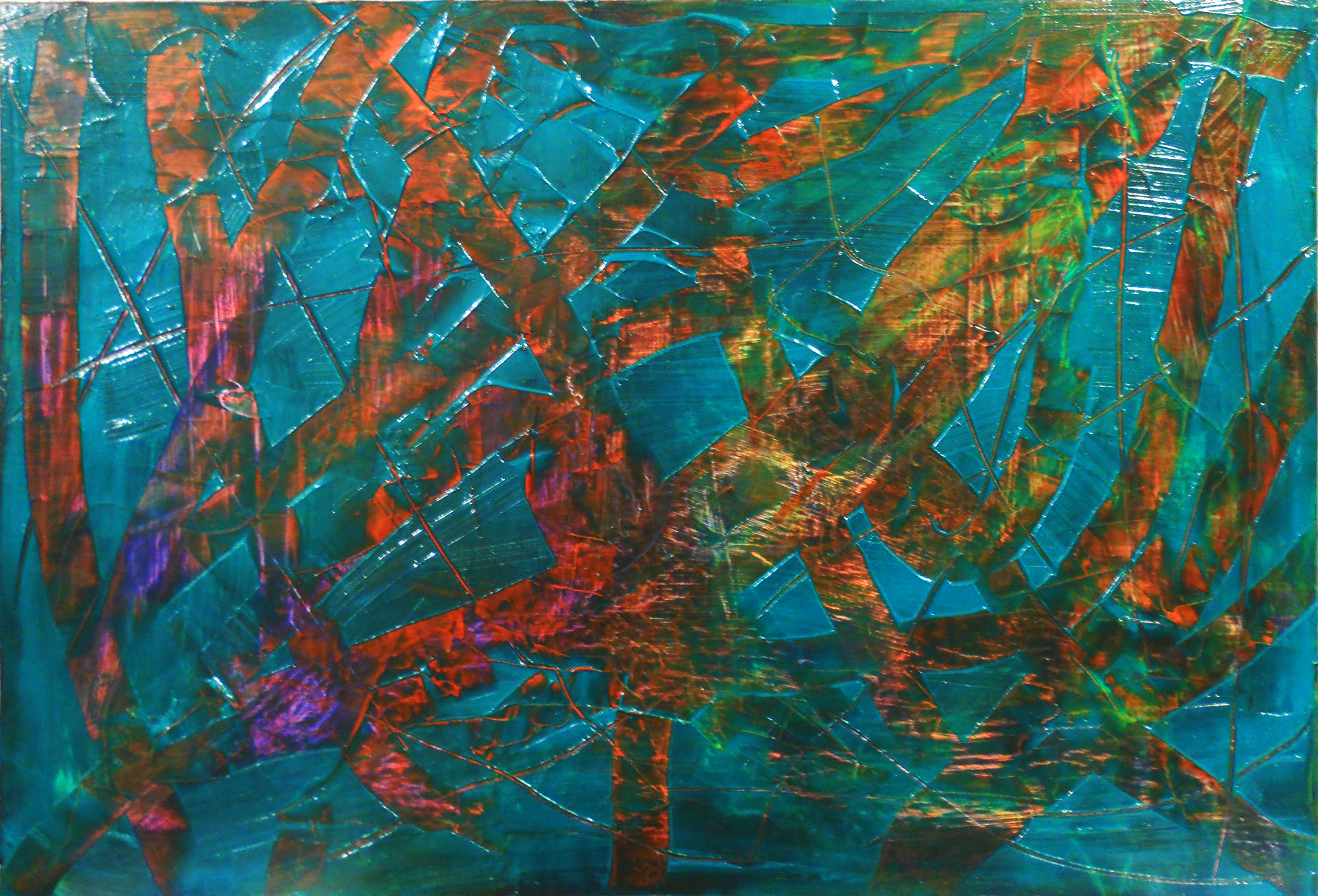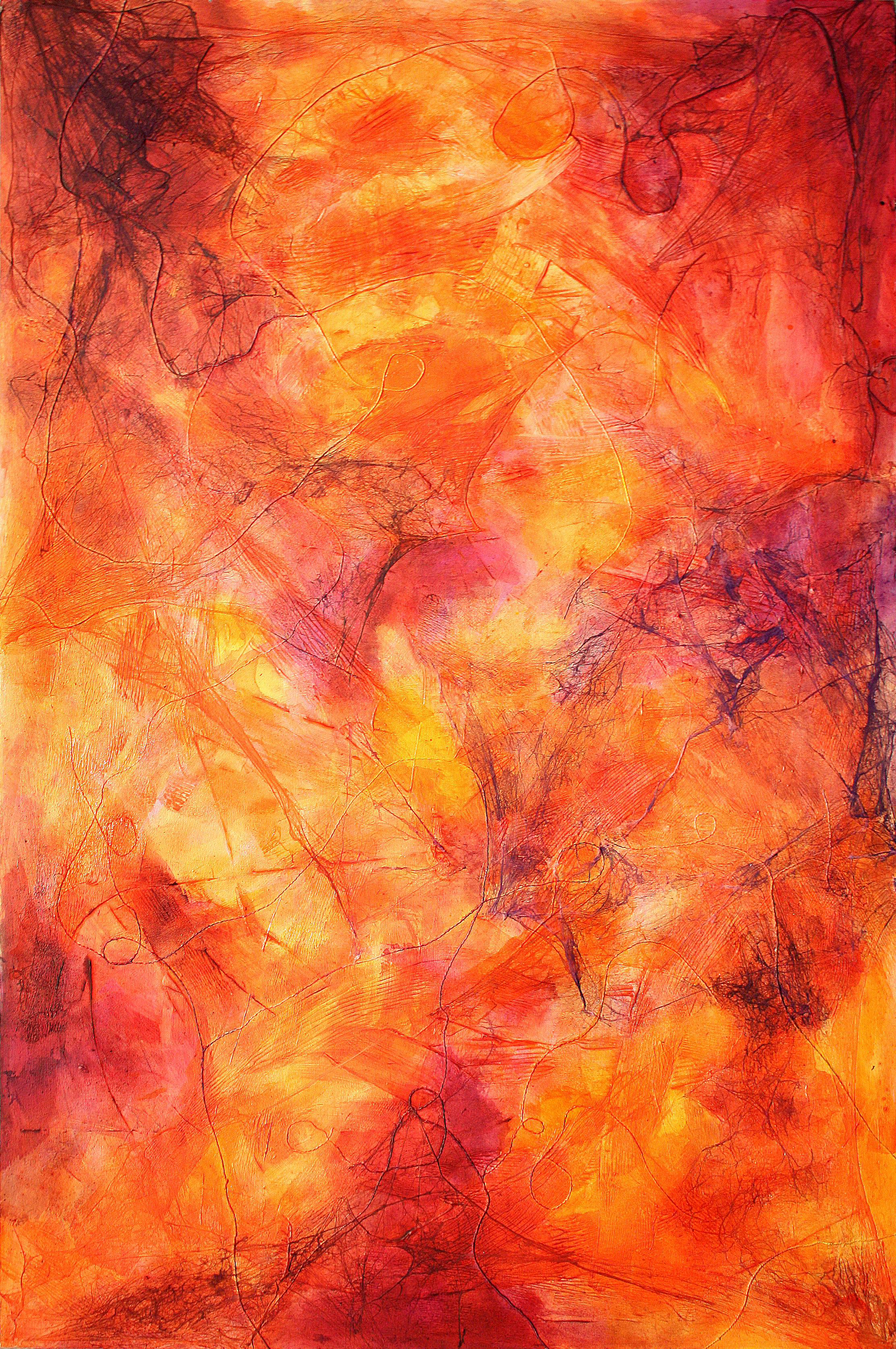
O (Oxygen)
Materials: Acrylic + Gel Medium on Canvas
3' x 2'
Painted in the style of Gerhard Richter, this peice eschews shape and form to represent the contrasting properties of this essential part of life as we know it.

Cl (Chlorine)
Materials: Acrylic Wash on Canvas
3' x 4'
Combining the process of watercolor with the vibrance and transparancy of acrylic paint, this peice represents the wide variety of physical properties Cl and it's molecules can display.

O2 (Oxygen)
Materials: Acrylic + Gel on Canvas
3' x 4'
Painted in the style of Gerhard Richter, this peice eschews shape and form to represent the complementary properties of this diverse element. In the original, the top layer of green is much darker and cooler; however, due to how this particular pigment mixed with the gel I used, it was impossible to capture the hue with a variety of cameras. I am a big fan of this happy accident, as it shows how subtle chemical changes can create unexpected results.
Silicon
Materials: Acrylic + Sand on Canvas
3' x 4'
Part of a series of abstractions based on the physical properties of elements from the periodic table. This peice explores the relationship between the primary component of dirt and rock, the forms they create, and the space they exist in.

P (Potassium)
Materials: Acrylic + String + Artificial Cobweb on Wood Panel
3' x 4'
An element in the series "Elementary Particles", created for the Chemisty Dept. of MSU. They are a series of abstractions based on the physical properties of elements from the periodic table and the roles they play in natural cycles on the Earth. This peice explores how P is the backbone of our Nucleic Acid (DNA, RNA, and mRNA) macromolecules, is bonded with Ca (Calcium) to create our bones, and also is the primary element that powers all life in the form of ATP (Adenosine Tri-Phosphate).

Hg (Mercury)
Materials: Acrylic + Gel + Iradescent Medium on Wood Panel
3' x 4'
An element in the series "Elementary Particles", created for the Chemisty Dept. of MSU. They are a series of abstractions based on the physical properties of elements from the periodic table and the roles they play in natural cycles on the Earth. This work explores the highly mutable nature of elemental HG. Existing as either an extremely volitile liquid or super soft solid, this element is a physical manifestation of the chaos that is inherant to Earthly systems.